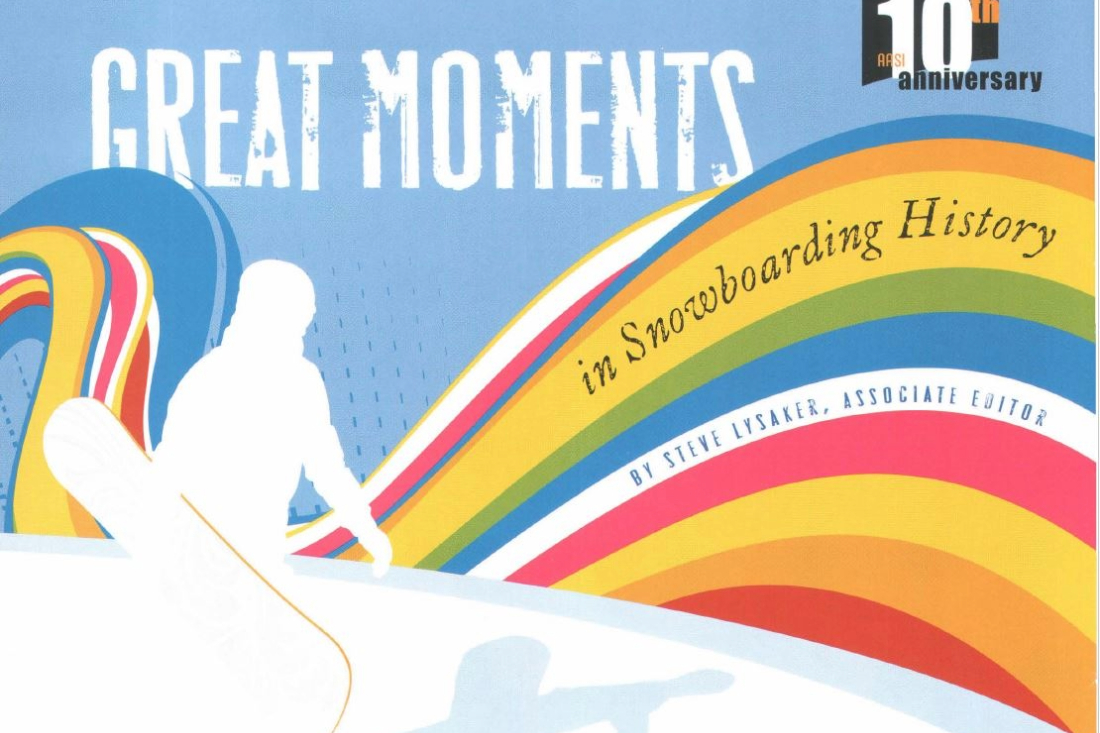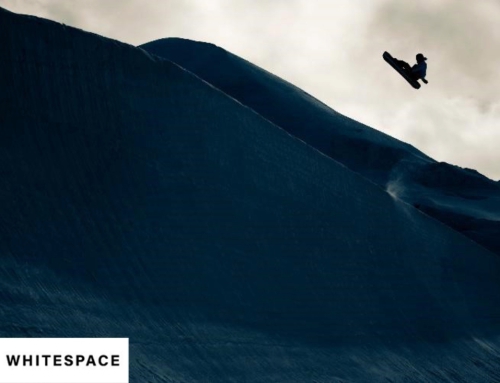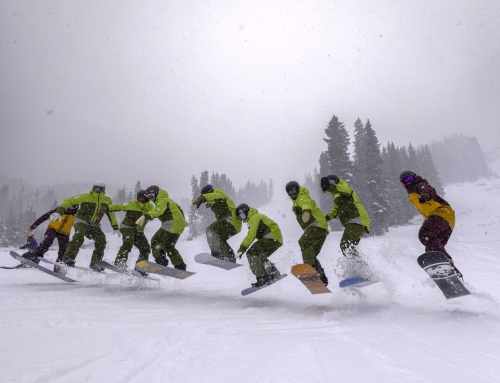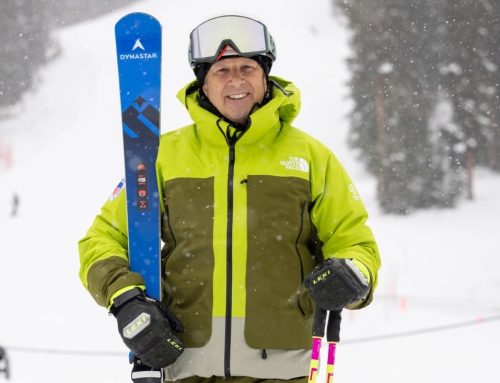From the Archives: “Great Moments in Snowboarding History,” Part 2
In Part 2 of “Great Moments in Snowboarding History, we return to the Winter 2008 issue of The Pro Rider, with the second part of a fun article by then-Associate Editor Steve Lysaker. Here, we explore the 1980s through the 2000s. Check out Part 1 here.
***
The 1980s
1981: Twelve burgeoning riders, many with creatively handmade equipment (like bungee cord “bindings”), take to Colorado’s Ski Cooper for King of the Mountain, the first organized snowboard competition, which includes slalom and freestyle events.
1982: Snurfing enthusiast Paul Graves arranges the National Snowsurfing Championships at the Suicide Six Ski Area in Vermont. Media coverage of the sport intensifies, as Sports Illustrated, the Today Show, and Good Morning America among others report on the contest. Although no governing body exists at this point, competitions continue to spread across the country.
1983: The competition between competitions heats up as Carpenter organizes the National Snowboarding Championships (later called the U.S. Open Snowboarding Championships) at Snow Valley, Vermont, and Sims holds the first World Snowboarding Championships (a.k.a. The Worlds) at Lake Tahoe’s Soda Springs Winter Resort.
1983: Partnering with Burton, Vermont’s Stratton Mountain launches the first snowboard school.
1983: Inspired by a Winterstick Team demonstration at France’s then-new Les Arcs 2000 resort, Frenchman Regis Rolland trades his skis for a Swallowtail and a starring role in Apocalypse Snow. Equal parts kitschy melodrama and extreme action, the film follows Rolland as he tries to escape an evil gang of monoskiers. The movie spawns two sequels and remains a touchstone of snowsports filmmaking.
1984: Snowboarding goes Hollywood as Bond, James Bond, rides in “A View to a Kill” (with Sims as one of the stuntmen for Roger Moore’s 007).
1985: Washington’s Mt. Baker, one of the few areas to allow boarders at the time, hosts its first Legendary Banked Slalom. Although no longer held on Super Bowl Sunday, the slalom is still an annual event and has grown so legendary that many riders have to be turned away.
1985: Absolutely Radical (later International Snowboard Magazine) becomes the first publication exclusively devoted to snowboarding. Knowing his audience, publisher Tom Hsieh jam packs the mag with pictures.
1985: Carving boards emerge in the United States and Europe as Mike Olson of Gnu and Serge Dupraz, then with Hot Snowboards, release decks with parabolic sidecuts, the influence of which extends to – brace yourself – alpine skis.
1985: The first signature snowboard, bearing Lake Tahoe wunderkind Terry Kidwell’s name, is introduced by Sims. The board is also notable for being the first freestyle model with a rounded tail.
1987: Due to the growing popularity of the sport and requests from manufacturers for snowboard-specific training, Professional Ski Instructors of America begins developing an education program for snowboard instructors.
1987: Twin-tip and freestyle boards emerge.
1987: Parade magazine declares snowboarding the worst new sport of the year. Snowboarders declare Parade lamest magazine of all time.
1989: Arapahoe Basin, Colorado, hosts the first snowboard instructor certification program, with 14 riders in attendance. Many of those pioneering educators go on to contribute to PSIA’s Snowboard Ski Instruction Manual, which is modeled after the Alpine ATS book and published later the same year.
The 1990s
1990: The first PSIA Snowboard Team, composed of 13 riders from various divisions, is created.
1990: Picking up the pieces from the short-lived National Association of Professional Snowboarders, more than 100 riders from five nations form the International Snowboarding Federation (ISF), conceived as a sanctioning body for international competition operated by and for riders.
1990-91: Courting a constituency that’s multiplying like Viagra-addicted rabbits, Colorado’s Vail Resort and California’s Bear Mountain develop obstacle areas for snowboarders. The terrain park bandwagon quickly fills to capacity.
1993: Despite the existence of competitive governing bodies like ISF, the International Ski Federation (FIS) votes to recognize snowboarding and plan its own World Cup tour. The move is not immediately embraced by the boarding community (legendary Norwegian rider Terje Haakonsen would boycott the 1998 Olympics over FIS involvement). FIS retains its control of the sport in international competition, while the ISF folds in 2002.
1993: PSIA produces the Snowboard Skiing manual. Although “Snowboard” receives top billing, “Skiing” gets a larger font. “Snowboard” pouts in trailer, vows revenge.
1994: International Olympic Committee demonstrates pulse, cultural awareness in naming snowboarding an official Olympic sport.
1994: Ride Snowboards hits the NASDAQ stock exchange, becomes first snowboard company to go public. Many riders mark the marriage of snowboarding and Wall Street by locking themselves indoors, awaiting inevitable plague of locusts.
1994: Boards designed specifically for women – including Sims’ Tina Basich and Burton’s Shannon Dunn pro models – hit the marketplace.
1995: Snowboard instructors attending the International Ski Instructors Congress held in Nozawa, Japan, are initially told they will not be permitted on the demonstration hill. Event officials eventually reconsider.
1997: AASI is officially established as a brand, complete with snazzy, award-winning logo.
1997: U.S. Skiing changes its name to the U.S. Ski and Snowboard Association (USSA) after becoming the official national governing body for snowboarding.
1997: Snowboarding helps usher in the inaugural Winter X Games with slopestyle, boardercross, big air, and halfpipe events.
1998: The Pro Rider debuts. Some hail the launch of a snowboarding magazine with an educational bent, others complain of too many words.
1998: AASI Snowboard Team contributes to the Snowboard Manual, and in a bloodless coup bars “Skiing” from the title.
1998: In Nagano, Japan, halfpipe and giant slalom become the first snowboarding events at a Winter Olympics.
The 2000s
2002: U.S. riders Ross Powers, Danny Kass, and J.J. Thomas sweep the Olympic halfpipe event in Park City, Utah, pushing snowboarding firmly into the mainstream and forcing awkward exchanges with Katie Couric and Matt Lauer.
2002: Just one year after opening its slopes to snowboarders, Aspen reaches an agreement with ESPN to host the Winter X Games for the next seven years.
2003: AASI’s Snowboard Movement Analysis Handbook is published, giving snowboard instructors a tool nearly as indispensable as their pocket drivers.
2004: Addressing ongoing demand for more instructor resources, AASI unveils its Focus on Riding DVD and the Children’s Ski and Snowboard Movement Guide.
2005: The Park and Pipe Instructor’s Guide, developed jointly by PSIA and AASI, begins to find its way into the homes of many a snowsports instructor – temporarily quieting anticipation of Sony’s PlayStation 3 gaming system.
2007: USSA breaks ground on the Center for Excellence in Park City, Utah, which will house high-tech training facilities for team members and affiliated clubs across the country.
2007: AASI publishes the Snowboard Instructor’s Guide, and braces itself for a buying frenzy the likes of which hasn’t been seen since Suzanne Somers’ debut on QVC.







